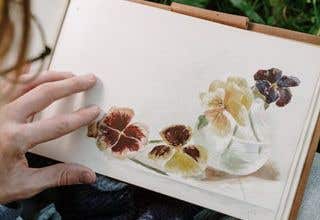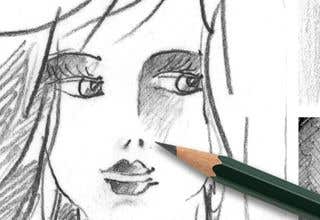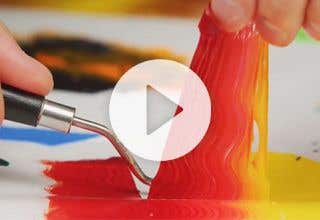Oil painting, used for centuries by artists to create timeless masterpieces, demands great technical skill and the mastery of unique techniques. For both novice and experienced artists, this guide can help improve skills and create stunning artwork in oil painting. Get ready to dive into the world of oil painting techniques!
Materials Required for Oil Painting

Oil painting is a popular form of art that has been practised for centuries by artists worldwide. If you're a beginner, it's important to know that oil painting requires specific materials to create your masterpieces. In this article, we'll cover some of the essential materials you'll need to get started.
One of the primary materials you'll need is oil paint. These paints are made from a combination of pigment and oil and come in a wide range of colours. Oil paints are known for their versatility, as they can be blended and layered to create different effects.
Oil painting differs from acrylic painting in many ways. If you would like to know which type of paint to work with on your next project, check out our Acrylic vs Oil Paints article to help you decide.
You'll also need brushes, which are essential for applying the paint to the canvas. Different brushes are designed for specific techniques and effects, so it's important to choose the right ones for your painting style.
Next, you'll need canvas, which is where you'll apply the paint. Canvas is typically made from linen or cotton and comes in different sizes and shapes.
Lastly, you'll need solvents and mediums to mix with the paint. These substances help to thin or thicken the paint and create different effects like gloss or matte finishes.
These materials are essential for oil painting, and investing in high-quality ones ensures that your artwork will look its best.
Common Oil Painting Techniques

Oil painting techniques offer artists a wide range of creative possibilities to bring new depth and dimension to their work. These techniques include blending, glazing, impasto, scumbling and alla prima.
- Blending: smoothing colours together to create a seamless transition.
- Glazing: layering thin, transparent colours over one another to create a luminous effect.
- Impasto: applying thick layers of paint to the canvas, creating a three-dimensional effect.
- Scumbling: applying broken layers of paint to create a textured effect.
- Alla Prima: completing a painting in one sitting, adding spontaneity and immediacy to the work.
- Underpainting: Initial layers of paint are applied to the canvas to provide a foundation for subsequent layers.
- Dry brushing: A painting technique that involves using dry paint on a brush to create a scratchy, textured effect.
- Sgraffito: A technique that involves scratching through layers of paint to reveal the layers underneath.
- Transitional blending: A technique used to create smooth transitions of colour by gradually blending one colour into another.
- Sfumato: A technique that involves blending colours to create a soft, hazy effect.
Overall, these painting techniques offer unlimited ways for artists to express their creativity in oil painting.
How to Experiment with Oil Painting Techniques
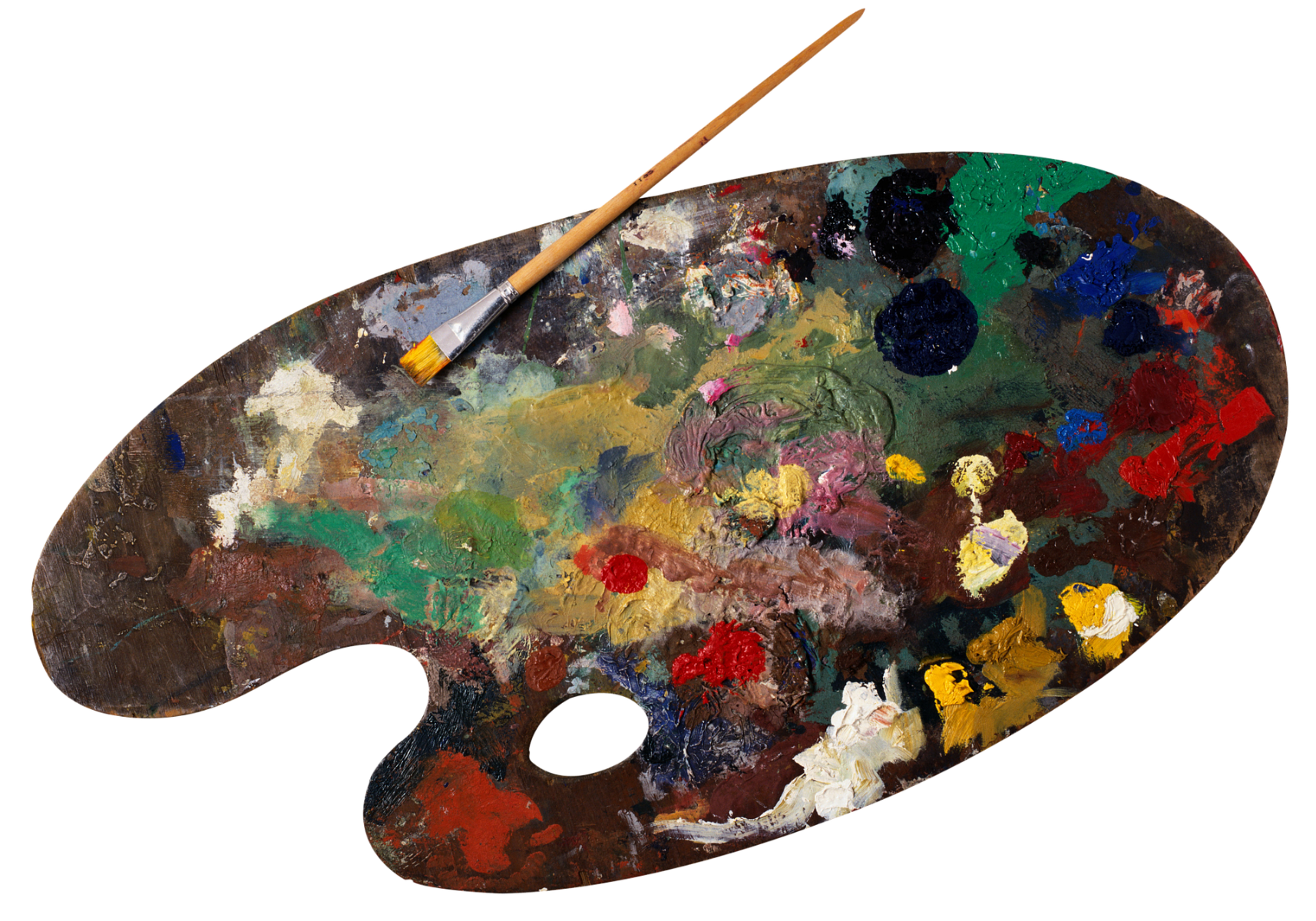
Experimenting with different techniques can help you develop your own personal painting style. Here are a few tips on how to achieve a unique style:
- Be open to experimentation: Don't be afraid to try new techniques and approaches. This will help you discover what works for you and what doesn't.
- Study the masters: Look at the works of great oil painters throughout history, and study their techniques and styles. This can help you to understand how different techniques can be used to create different effects.
- Be true to yourself: Your painting style should reflect your own unique personality and vision. Don't try to copy other artists or paint in a way that doesn't feel natural to you.
- Practice regularly: The more you paint, the more your style will develop and evolve. Don't be discouraged if your early attempts don't look the way you want them to. Keep practising, and you will get better.
In conclusion, experimenting with different oil painting techniques is a great way to develop your skills as an artist and discover new ways of expressing yourself through your paintings. By being open to new ideas, studying the masters, and practising regularly, you can develop a unique and personal painting style that reflects your own unique vision and creativity.
Step-by-Step Guide to Oil Painting
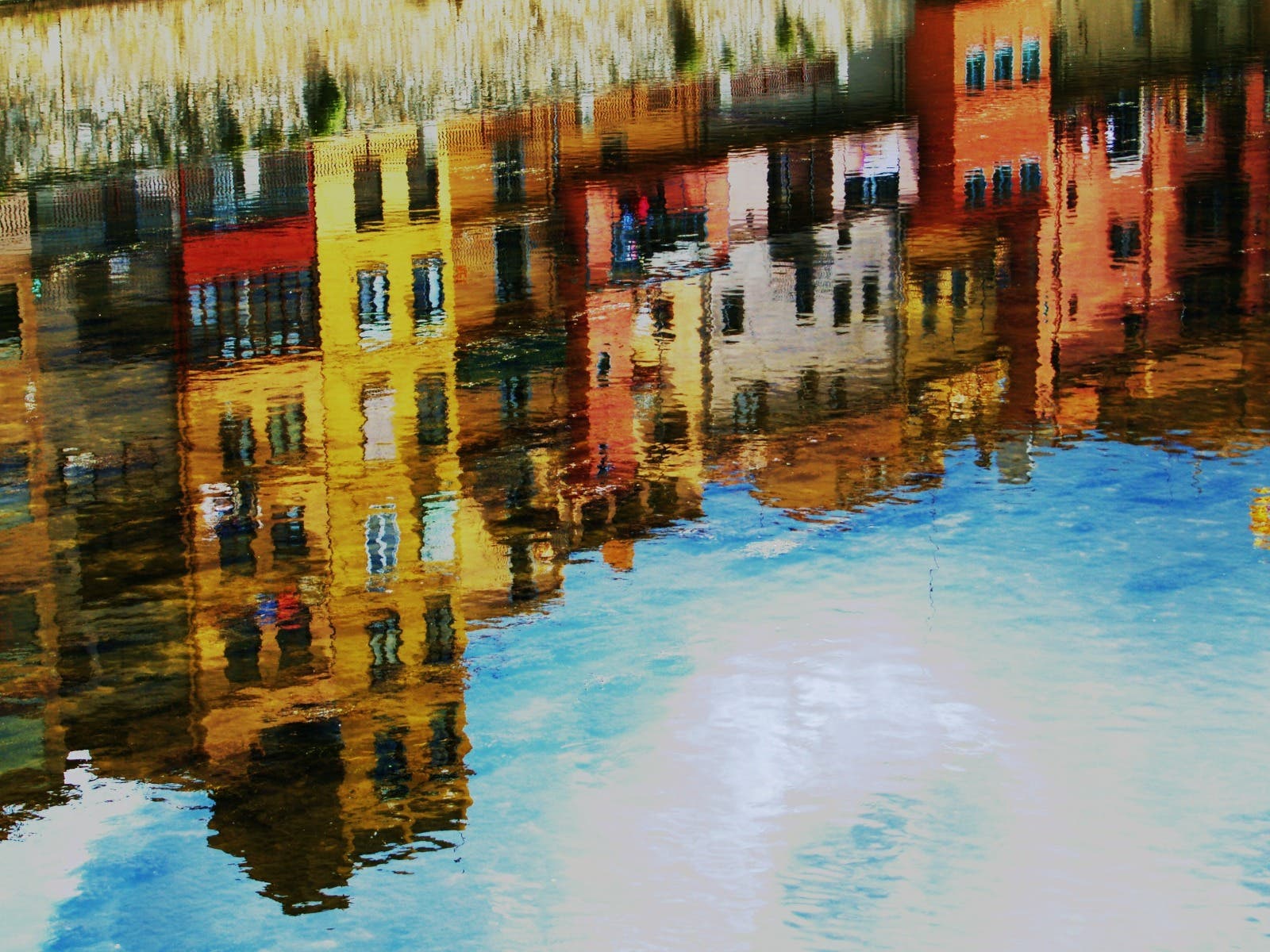
- Choose your subject and composition: Before you begin painting, you need to choose a subject to paint and decide on the composition. Consider the placement of objects, the lighting, and the overall balance of the composition.
- Prepare your canvas: If you're using a canvas, you'll need to prepare it by applying a coat of gesso or primer to create a smooth surface for the paint to adhere to.
- Sketch your composition: Once your canvas is prepared, sketch the basic outlines of your composition with a pencil or charcoal. This will serve as a guide for your painting.
- Mix your colours: Oil paint takes longer to dry than other types of paint, so you have more time to mix your colours. Use a palette knife to mix your paint on a palette, starting with the primary colours (red, blue, and yellow) and mixing them to create the colours you need.
- Start painting: Begin painting by laying down a thin layer of paint on the canvas. This will serve as a base layer for your painting. Use a large brush to cover the canvas quickly, and then use smaller brushes to add more detail.
Are you just starting out on your artistic journey and looking for a beginner's guide to oil painting? Look no further- check out our beginner's guide to working with oil paints here!
Here are some additional tips on composition, brush handling, and colour mixing:
Composition:
- Consider the rule of thirds: Divide your canvas into thirds horizontally and vertically and place your subject at the intersection of two of these lines.
- Use the principle of balance: Create balance in your composition by placing objects of equal visual weight on either side of the canvas.
- Pay attention to negative space: The areas around your subject can be just as important as the subject itself.
Brush handling:
- Experiment with different brushes: Different types of brushes can create different effects, so don't be afraid to try out different brushes.
- Use a light touch: Let the brush do the work, and don't press too hard on the canvas.
- Practise your strokes: Practise making different strokes with your brush to create different textures.
Colour mixing:
- Use a limited colour palette: Start with a limited palette of colours and mix them to create the colours you need.
- Mix colours on the palette, not the canvas: Mix your colours on the palette to avoid muddying the colours on the canvas.
- Consider the colour wheel: The colour wheel can help you understand how colours relate to each other and can be used to create harmonious colour schemes.
Tips for Successful Oil Painting
Oil painting can be a beautiful and rewarding medium, but it does require some care and attention to ensure successful results. Whether you're a beginner or an experienced painter, here are some tips to help you make the most of your oil painting practice.
Advice on How to Properly Care for Your Materials Before, During, and After Painting
One of the most important things you can do to ensure successful oil painting is to properly care for your materials. Here are some tips to help you do that:
- Store your paints properly: To prevent mould growth, store oil paints in a cool, dry place that is not exposed to direct sunlight or humidity.
- Keep your brushes clean: After painting, clean your brushes with mineral spirits, rinse them thoroughly, reshape them, and store them. Find out more about How to Clean Oil Paint Off Brushes here.
- Use high-quality materials: To achieve the best results, it is advisable to invest in high-quality paints, brushes, and other materials, as cheaper alternatives may not perform as well and can make it harder to achieve the desired effects.
- Use a palette knife: A palette knife can be used to mix paint and apply it to the canvas, and it's easier to clean than a brush.
- Clean your palette regularly: Make sure to clean your palette after each painting session to avoid the paint drying on it.
Tips to Maintain a Clean Workspace
A clean workspace can help you stay organised and focused during your painting sessions. Here are some tips to help you maintain a clean workspace:
- Use a drop cloth: Place a drop cloth or sheet of plastic under your easel to catch any paint drips or spills.
- Use a trash can: Keep a trash can nearby to dispose of paper towels, used paint tubes, and other trash.
- Clean as you go: Take a few minutes every so often to clean your brushes and palette to avoid a build-up of paint.
- Use a clean water cup: Use a separate cup of water to rinse your brushes instead of dipping them in the solvent container.
- Store materials properly: After you finish painting, store your materials in a safe and organised way. Make sure to put caps back on paint tubes and dispose of any rags or paper towels that are covered in solvent.
In conclusion, properly caring for your oil painting materials and maintaining a clean workspace can set you up for success in your painting. By organising your materials and cleaning up after each session, you can create beautiful and high-quality oil paintings.
Conclusion
To sum up, oil painting techniques such as colour mixing, brushwork, layering, and glazing play a crucial role in creating stunning artwork that captivates viewers. An artist's growth depends on their continued exploration and experimentation with various techniques to widen their skillset and develop a unique style. Mastering these techniques helps an artist create awe-striking works that capture the subject's essence and create a long-lasting impact on the viewers.
Additional Reading
Oil Painting For Beginners: Your Guide to Working with Oil Paints
FAQ - Frequently Asked Questions About Oil Painting
What are the different types of oil painting techniques?
There are many techniques used in oil painting, such as alla prima (wet-on-wet), glazing, impasto, scumbling, and underpainting. Each technique produces different effects and textures on the canvas.
How do I choose the right paint brushes for oil painting?
Choose paint brushes with synthetic or natural bristles that are suitable for oil painting. The size and shape of the brush will depend on the technique you are using and the size of your painting.
How do I mix oil paints?
To mix oil paints, use a palette knife to mix the colours on your palette. You can create different shades and tones by mixing different colours together.
How do I create texture in oil paintings?
Texture can be created in oil paintings by using techniques such as impasto, which involves applying thick layers of paint to create a three-dimensional effect, or scrolling, which involves using a dry brush to create a textured surface.
What is the best way to clean my oil painting brushes?
To clean your oil painting brushes, use a solvent such as mineral spirits or turpentine to remove excess paint. Then, use soap and warm water to clean the brushes thoroughly.
How long does it take for oil paint to dry?
Oil paint can take several days to several weeks to dry, depending on the thickness of the paint, the humidity and temperature of the environment, and the type of oil used.
How do I store my oil paintings?
To store your oil paintings, make sure they are completely dry and then wrap them in acid.







